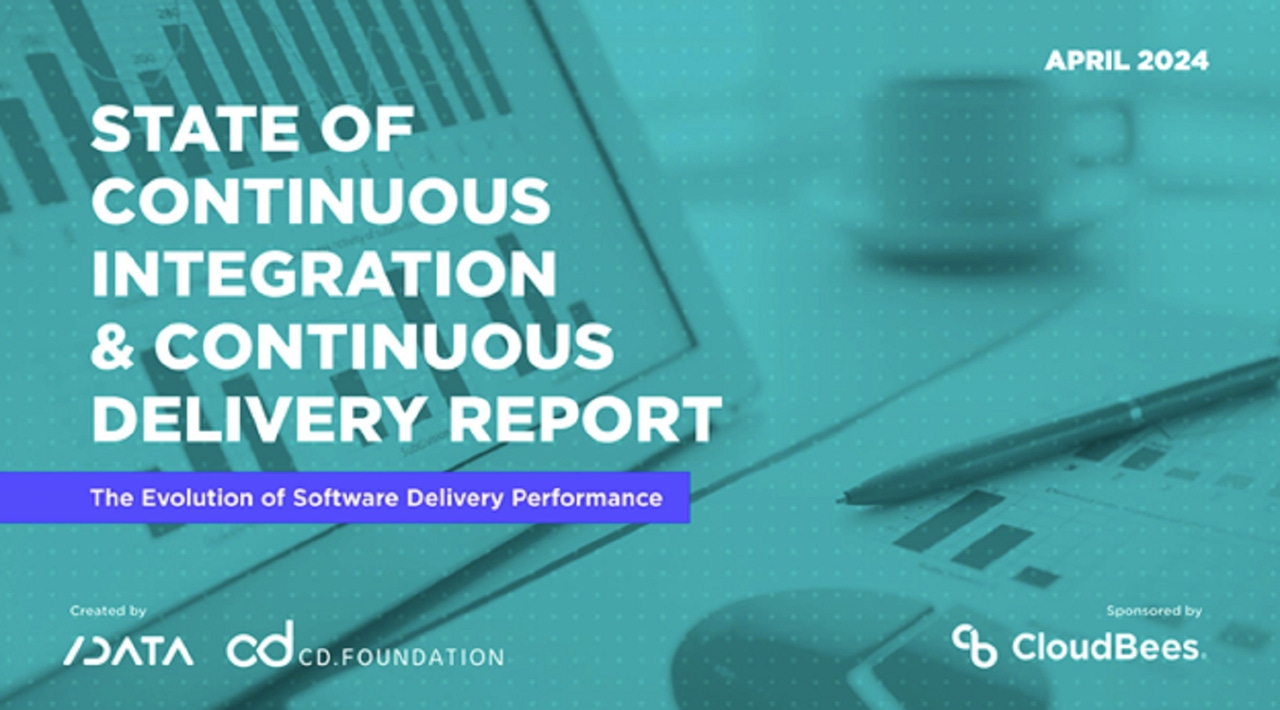DevOps Momentum Stalls as Software Delivery Metrics FlatlineDevOps Momentum Stalls as Software Delivery Metrics Flatline
The 2024 CD Foundation State of CI/CD Report reveals that DevOps and software delivery efforts are stagnating a bit, but there is hope.

DevOps is still a major trend in software development and operations, but it doesn't have quite the same excitement or momentum that it once had.
A new report from the Continuous Delivery Foundation (CDF) provides an in-depth look at the evolving state of DevOps and continuous integration/continuous delivery (CI/CD) practices among developers worldwide. While adoption of methodologies such as CI/CD remains widespread, developers' actual software delivery performance metrics have stagnated or even declined slightly in recent years.
The 2024 CD Foundation State of CI/CD Report follows the CDF's 2023 report, which found a high degree of DevOps participation, with some challenges around process automation.
Among the key highlights in the 2024 report:
83% of developers are involved in DevOps practices as of Q1 2024, down from 85%.
9% of developers deploy code multiple times per day.
11% can restore service from an outage in under an hour.
Only 14% of developers reported being able to get code running in production in less than one day.
The report also found that the proportion of low performers for each of the deployment
performance metrics that it tracked is increasing.
"The biggest surprise to me was the growing proportion of low-performer organizations, along with the stable but not growing proportion of high performers," Andrea Frittoli, chair of the Technical Oversight Committee at the CDF, told ITPro Today. "I think that can be explained by the increasing number of requirements that DevOps practitioners have to satisfy, like security, compliance, and auditing."
Delivery Speed and Stability Metrics Flatline
The key software delivery performance indicators that the report tracked show little to no improvement over the past three and a half years of data.
Only 14% of developers reported being able to get code running in production in under one day as of Q1 2024 — a figure that has remained range-bound between 13-17% since Q3 2020, with no clear upward trend.
And the percentage of developers deploying code multiple times per day has declined slightly to 9%, from 11% when tracking began in Q3 2020. It has hovered around 9-10% for the past two years.
Perhaps most concerning are the results around time to restore service after an unplanned outage or impairment. As of Q1 2024, just 11% of developers reported being able to restore service in under an hour — essentially unchanged from 11-13% over the past two years. Meanwhile, a full 41% now take more than a week to restore service, up from 34% in Q3 2020.
DevOps Tech Integration Poses Challenges
The report analyzed factors that may be hampering faster improvements across multiple software delivery metrics. It revealed a "strong correlation between the number of DevOps technologies used by developers and their likelihood of being a top performer" across measures like lead time and service restoration speed.
Use of CI/CD tools specifically was also associated with better performance, especially when using managed and self-hosted solutions together. However, utilizing multiple tools of the same type (e.g., multiple self-hosted CI/CD tools) appeared to degrade deployment performance — likely due to integration complexities.
The CDF is well aware of the challenges and is hoping to help solve them," Frittoli said.
"The CDF is determined to address the issues of interoperability in the CI/CD space, which we believe will help invert these trends in the future," he said.
As the DevOps culture and practices become more mainstream, the report suggests developers and organizations may need to take a more strategic approach to adoption. With the pace of progress stagnating based on the latest metrics, a sharper focus on implementing only the most complementary and integrated DevOps technologies — rather than piling on too many disjointed tools — could be key to finally transforming actual software delivery speed and stability.
"I definitely would like to see more developers going beyond CI and doing continuous deployments," Frittoli said. "We should make it easier for developers to adopt and learn the tools they need to achieve this across industries and company sizes."
About the Author
You May Also Like








.jpg?width=700&auto=webp&quality=80&disable=upscale)
